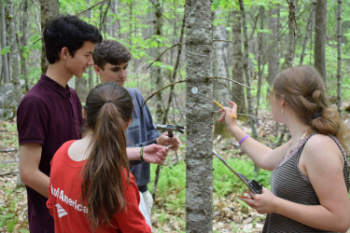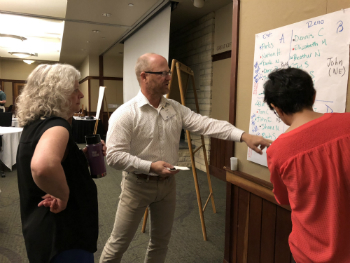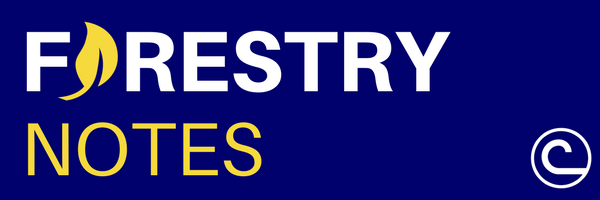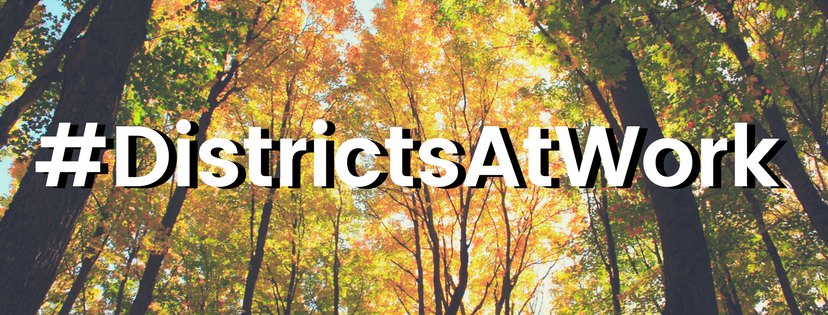WALDO COUNTY UTILIZES NEW APPROACH TO FOREST RESOURCE PROTECTION

The Waldo County Soil and Water Conservation District (SWCD) of MidCoast Maine has been working in partnership with local landowners to improve the health of regional forests. Forests are facing unprecedented threats, including forest pests poised to decimate dominant tree species in Maine and invasive plants impacting forest regeneration. Conserving forests is a major focus of the SWCD since Waldo County is more than 80 percent forested, and a forest-based economy is a significant part of many Mainers’ livelihoods. That’s why Maine has developed a new concept to address forest conservation and stewardship in its service area through a project called the Forests for Our Future (FFOF).
The FFOF program is an innovative approach that unites a wide variety of outreach and technical assistance activities in forest conservation. The project is designed to offer a coherent strategy and public face for the district’s varied programs to protect forest resources. One part of the program, now in its second year, is a monthly series on small-scale woodland stewardship that addresses many aspects of woodland management, from sugarbush maintenance to smaller-scale harvest and forestry plans. In these workshops, community members tour local woodlands with landowners who are implementing effective practices to steward their woods. The SWCD is partnering with the Maine Forest Service to implement the series. In addition to workshops, staff is offering conservation assistance to forest owners wishing to implement adaptive management. Read more>>>
WORKSHOPS IMPROVE RESOURCE PROFESSIONALS' OUTREACH EFFORTS
The Sustaining Family Forests Initiative (SFFI)’s Tools for Engaging Landowners Effectively (TELE) program out of Yale School of Forestry & Environmental Studies is helping forestry agencies connect to private landowners through better outreach. SFFI-led workshops help resource professionals learn how to influence landowners to take steps to sustainably manage their lands.

“It’s really thinking about what your goals are for the landscape and who needs to be doing what, where,” SFFI program manager Katherine Hollins said. “It’s talking about the landowners and who they are and what they want to do, and figuring out how that overlaps with what the agency or conservation district needs.”
Through the TELE program, SFFI hosts two-day workshops for natural resource professionals including state and national foresters, conservation district staff, forest technicians, stewardship coordinators and others interested in developing outreach efforts to effectively work with private landowners on management plans and general forest health. The program provides a six-step process to design outreach plans that leverage resources, better connect with landowners, and reach landowners that are ready to take action on the ground. Read more >>>
FOREST SERVICE ANNOUNCES NEW STRATEGY TO IMPROVE FOREST CONDITIONS
In August, the U.S. Forest Service announced a new strategy for managing catastrophic wildfires and the impacts of invasive species, drought and insect and disease epidemics through a new report titled, Toward Shared Stewardship Across Landscapes: An Outcome-based Investment Strategy. The report outlines the Forest Service’s plans to work more closely with states to identify landscape-scale priorities for targeted treatments in areas with the highest payoffs.
“The challenges before us require a new approach,” Interim Forest Service Chief Vicki Christiansen said. “This year, Congress has given us new opportunities to stand shoulder-to-shoulder with state leaders to identify land management priorities that include mitigating wildfire risks. We will use all the tools available to us to reduce hazardous fuels, including mechanical treatments, prescribed fire and unplanned fire in the right place at the right time.”
A key component of the new strategy is to prioritize investment decisions on forest treatments in direct coordination with states using the most advanced science tools. This allows the Forest Service to increase the scope and scale of critical forest treatments that protect communities and create resilient forests.
The Forest Service will also build upon the authorities created by the 2018 Omnibus Bill, including new categorical exclusions for land treatments to improve forest conditions, new road maintenance authorities and longer stewardship contracting in strategic areas. The agency will continue streamlining its internal processes to make environmental analysis more efficient and timber sale contracts more flexible.
The complete strategy is available here.
|
|
|
|
|
Email Marketing By
|


|
|
|
|
|






